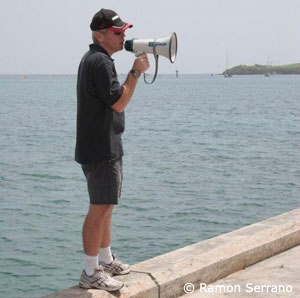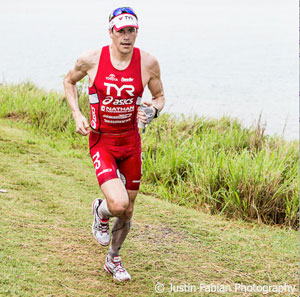A St.Croix Triathlon Guide
The 25th anniversary of the St. Croix half Ironman takes place on May 6th. It seems that after 25 years, we athletes still struggle with cracking this race. For most of us it goes from this fine intention of racing, to a survival struggle. The race evolves from a head to head battle with friends and fellow competitors to a battle between the athlete and the course.
Going in, many feel that they are competing with other athletes for Vegas and Kona slots, but race director, Tom Guthrie and his team, have already decided otherwise. They give us the biggest competitor, and that is the course.
The great thing about Slowtwitch.com and our reader forum is that we have a lot of collective knowledge on a variety of topics and in this article, we try to roll up some of that collective knowledge to help you defeat the Beauty (the swim), the Beast (on the bike) and the Buccaneer (on the run).
The course awards patience. We can’t change our fitness on race day, and can only hope that we pilot the formula 1 caliber chassis. No one does this race because it is easy and to a person, everyone has a healthy dosage of respect for it, but nevertheless, as athletes, our racing instinct often overrides our logic. In this guide, we’ll walk you through blow by blow so that when you get there your CPU can override your racing instincts and get you to the finish as efficiently as possible.
Pre Event:
In the days leading up to the event, St. Croix closes down it harbor daily for a practice swim from 11am to noon. For athletes coming from northern climates, there is a very good chance that not a single part of your body has seen a ray of sunlight since October other than your face.
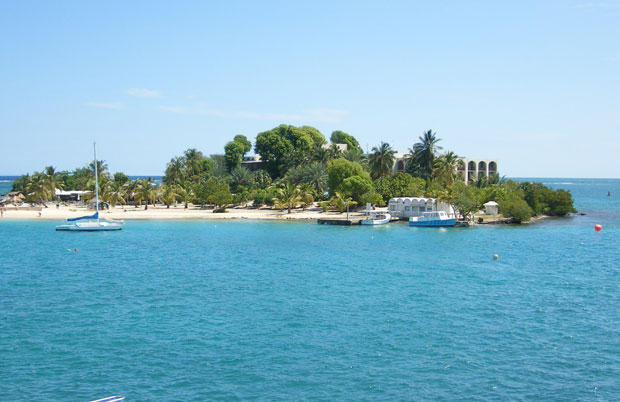
During these swims, the sun is directly vertically over your back. This is the place to get a race week sun burn that will bother you all week and potentially cause problems on the run during race day. Covering up and SPF50 are your friends.
The practice swims also offer the opportunity to sight. Note, that the position of the sun in the sky is totally different during practice swims versus race day when you are swimming after 6:30 am. Sighting points using large landmarks should be established rather than buoys. Enjoy the scenery during the practice swims. This is one of the most beautiful swims in the sport.
Riding in St. Croix is on the left side of the road. It is useful to do a bit of riding to get bearings for those of us from nations that drive on the right. The pavement often has many parts that are upgraded for race week, but there are parts that are rough too. Use practice rides to be aware of this. Also on the first and last loop, there is a decreasing radius high-speed downhill that comes on the way back in to town. Several of the grades on the course are also very deceptive.
During the pre-race briefing do not ask Tom Guthrie what the expected weather will be. He will give you the standard answer that has been given for 25 years. Look up in the sky and it will be the same. Hot, windy and humid.
Race Morning and the Swim
First order of business is SPF50. This is your free shade, because when you leave the transition zone which happens to have one of the few trees that you can actually get shade from during the entire race, you won’t see an ounce of shade for the rest of the day’s racing.
Prior to the race, all athletes need to swim around 200m over to the island where the Hotel on the Cay is located, prior to the pro start at 6:30 am. If you have a routine of downing a gel of small drink, you’ll need to do this before you swim over or swim over with it. The nice thing is you get an up close and personal view of the pro start.
The swim itself should not serve up any surprises if you made it to the practice swims. The start of the swim can be rough with a tight circular left hand turn. After that, things calms down quickly. Drafting can be tougher than a large mass start race especially since the swells and currents can create a lot of turbulence behind the person you are drafting. When exiting the swim, there is tall grass in the water, on your left right near the swim wall exit. It might be worthwhile staying to the right of that, as some athlete have complained of small cuts etc. Also sometimes there is more of a current close to the wall. Other than that, enjoy the swim. Hopefully you have taken care of doing some kick sets in your preparation so your legs are well conditioned for this none wetsuit swim.
The Bike Course
The entire bike course is about getting through things as efficiently as possible without blowing the body for the run. Ending the St. Croix bike on an empty tank can mean missing one’s target run split by tens of minutes. Just remember that the St. Croix course is not about the bike, it is about the run. But you already knew that, so we’re preaching to the choir. But you’re going to forget all that in the first 20 miles of the bike, so we need to repeat it, ‘It’s not about the bike, it’s about the run….”
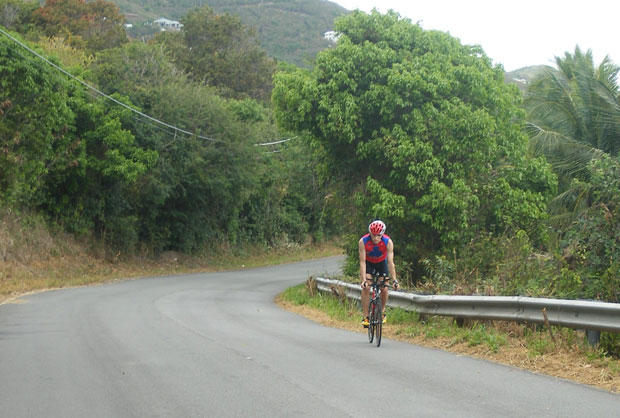
A few things to prepare relative to equipment. If you are riding wider width race wheels, then you have the luxury of riding at lower tire pressure. Jimmy Riccitello has recommended pressures in the 80s to account of the chip seal and vibration. Super high pressure is probably not great. In some editions there has been heavy rain on the course too, so this is another reason to ride with slightly lower pressure. Make sure all your bolts and cages are tight. St. Croix is famous for launched bottles!
Just in case you forgot, “It’s not about the bike, it’s about the run….” and please repeat for your entire flight over to St. Croix and continue to remind yourself this until you get through the first 20 or so miles to the base of the Beast. This entire part of the bike course is ridden on turbo overdrive by many athletes, but this is not the place to burn matches. The racing in St. Croix only starts when you have climbed and descended the Beast. The Beast is only a prologue for the entire day. It gets all the glory, but realistically the Beast won’t defeat a well prepared rider. The hills and wind on the other side will.
But before we get to the other side, we know you want to ask about the Beast so here goes with our Beast rapid fire Q&A sequence.
Q1: What gearing do I need?
A1: As low as you can put on your bike. 34×27 is a good starting point for most of us other than the very pointy end Kona qualifier crew.
Q2: Do I sit or stand?
A2: Sit until I run out of gears, then stand. You won’t have much of choice.
Q3: How hard do I go?
A3: You don’t decide how hard you go, the Beast dictates that for you. The quick answer is you will probably need to go as hard as you can to stay upright. All kidding, aside, as soon as you turn left to start the Beast, gear down to your lowest gear. Start as easy as possible. It will get very difficult very quickly.
Q4: How steep is it?
A4: It is 15-20% or more. Ride the outside of the bends which are less steep. The inside is very steep. Also if it is raining, your rear tire can spin out, so you may need to sit the steepest parts to keep traction
Q5: If I stop can I restart?
A5: It is so steep that it is difficult to clip back in. Probably better to walk. Frankly it won’t be that much slower!
The good news is there a large crew of volunteers to greet you at the top with an aid station. Give them a thumbs up, some of the best volunteers in the sport are on this island. The descent of the Beast can be quit tricky especially if there is a torrential thundershower. Be careful there and make sure your super bike’s aero brakes are fully functional. Once you get down the Beast, the real racing starts. The winds will be high, the grades keep coming at you and the sun will be out. Everyone is starting to hurt a bit at this point. You will not be alone. During this entire section it is easy to forget about nutrition. The pavement requires your attention and with the constant undulations and gear changing, especially in the lead up to the Divi Carina Bay, you may totally forget about drinking and eating until it is too late.
The back side of the Beast sets you up for the run. Pace it well, and get nourished. There are also a few 15% grades on this section. You’ll see them well ahead if you did not pre-ride them. Gear down early, to your easiest gear. Don’t try to power over and be one of those guys fumbling with gearing ¾ way up and missing shifts under tension. Soon you will be around the far end of the Island passing close to Point Udall, the Eastern most point in the USA. Lots of rollers from here into T2, and if you paced well, you’ll be passing lots of blown guys.
The Run
If you paced well, you’ll have a massive smile on your face, and will be saying, “man, those guys at Slowtwitch definitely had it dialed in.” If you forgot, you will be cursing us, but that is ok, we told you so. There is always next year!
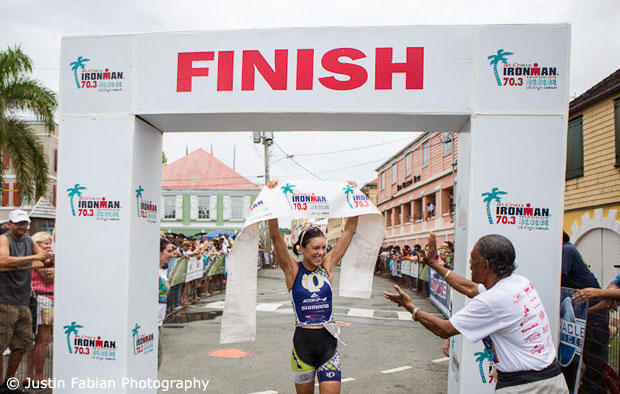
What do you need to know now? Not much really. Your run pace will be the pace that you predetermined during the ride and during your run training. Loop 1 still requires a lot of patience. A half marathon is long way. Depending on your run capabilities, most athletes would be well advised to dial back on all the climbs leading to the Buccaneer resort. Once inside, the place can turn into a sauna in the areas where you are sheltered from wind. Do not let this get to you, it will get better. Also do not charge up the first big climb in the Buccaneer – be patient. The downhill is steep, so having some legs left on the backside to keep a good cadence is helpful.
Loop 2 is where you fast guys will secure your Kona or Vegas slots. You probably repeated “It’s not about the bike, it’s about the run….” in your head and are now being rewarded.
The aid stations in St. Croix are very well stocked. Take advantage of the ice that is offered. Running with ice in your singlet pockets and in your hands can be mentally soothing. We won’t delve into the actual physiological cooling benefits and will leave that to science, but if nothing else, it is mentally soothing and reduces the pain.
The final loop through historic Christiansted can be like a victory loop or an unnecessary torture loop as you pass within meters of the finish before being sent off to loop around downtown. There are big crowds, so you want to look like Andy Potts or Angela Naeth cruising through. Looking good seems to get the crowd cheering for you. They are happy you are on their island. Draw energy from their cheers.
Finally, however your race goes, St. Croix has one of the best after parties in the sport at the Divi Carina Bay resort. It is a must for all athletes. It is a great place for the post event analysis, paralysis and excuse sharing, that we are all notorious for, while celebrating our champions and getting 1 on 1 time with many professionals who gracefully make themselves available to age group participants. To top things off, this year’s event is sponsored by Captain Morgan’s. Let’s see how that elevates the post race festivities.
Devashish Paul is or lifestyle contributor to Slowtwitch.com and is based out of Ottawa Canada. He has competed in St. Croix 3 times and raced at all distances on 4 continents at all distances. Of the many races he as done, St. Croix is one of the few races in our sport that falls into the category of classic and offers a challenge in every aspect.


